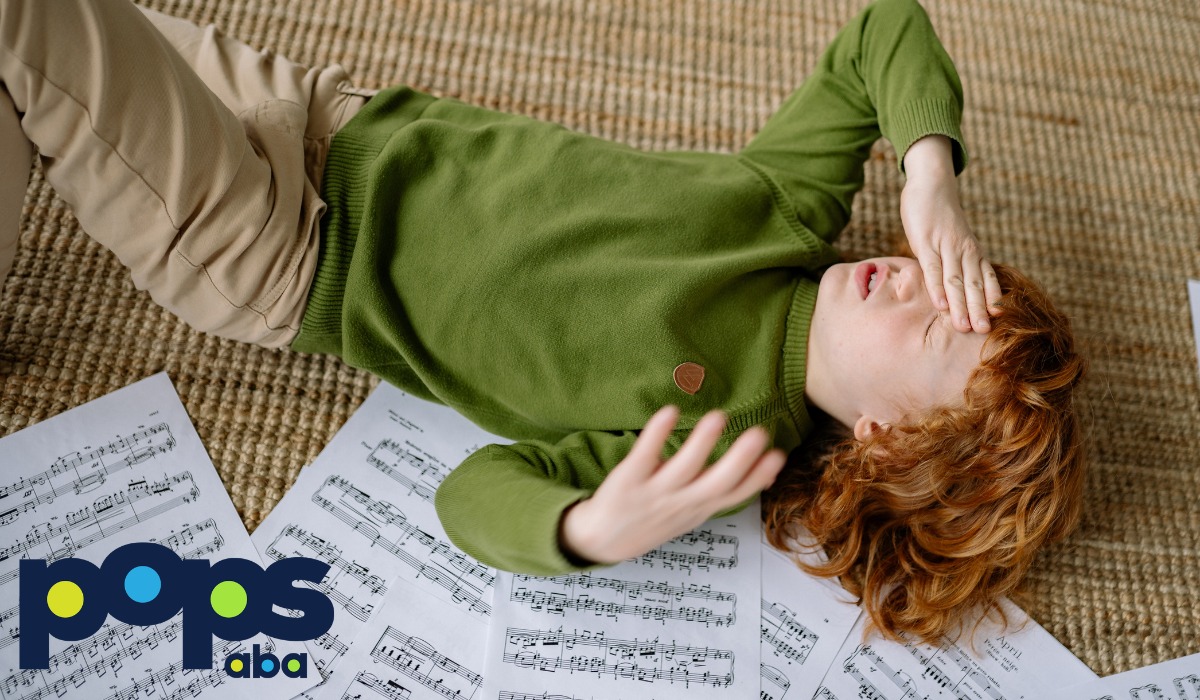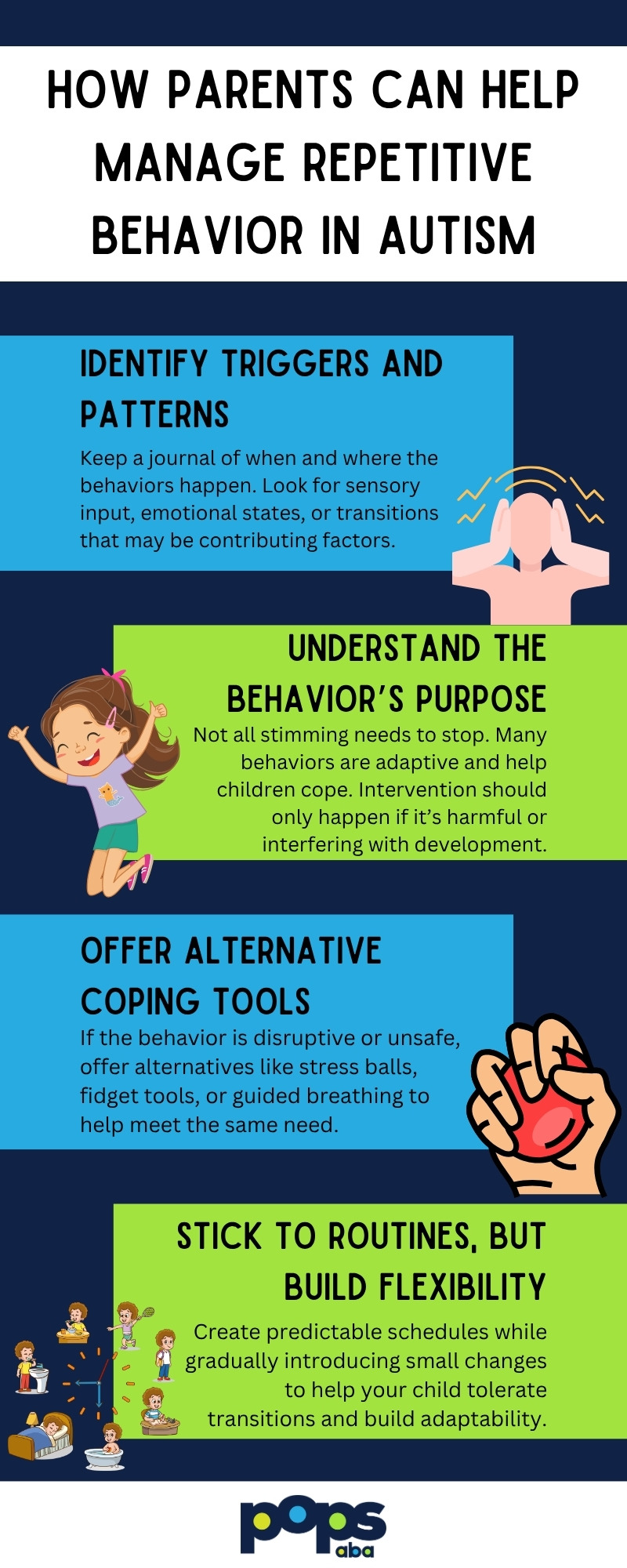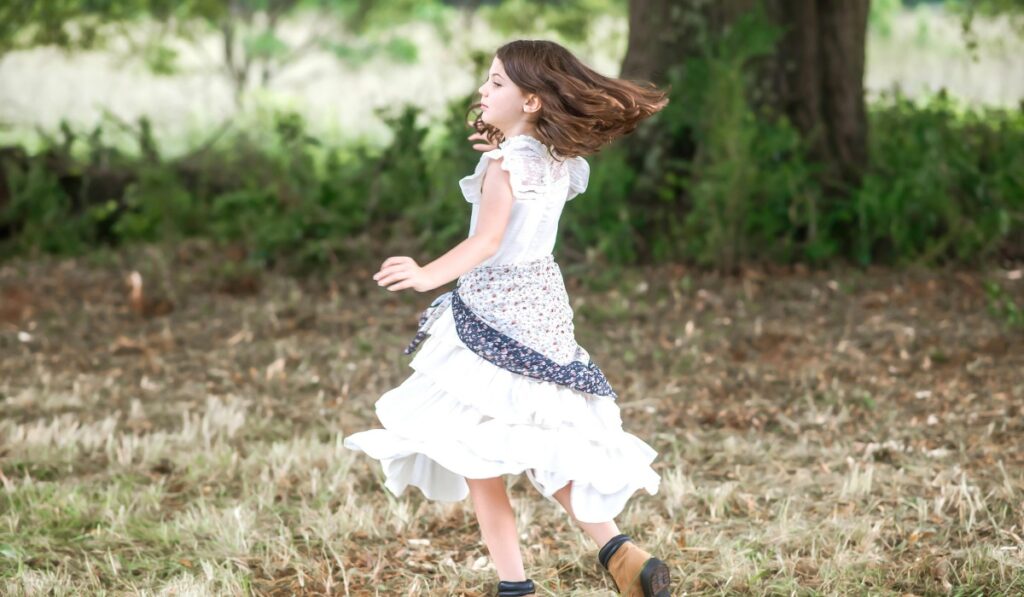Key Points:
- Repetitive behaviors in autism are common and can range from physical movements to repetitive language and routines.
- These behaviors often serve purposes like sensory regulation, communication, or managing anxiety.
- Understanding the root causes of repetitive behaviors helps caregivers better support and respond to their child’s unique needs.
Repetitive behaviors are among the most widely recognized features of autism, present in approximately 44% of autistic individuals. These behaviors can include hand flapping, rocking, repeating phrases, or rigid adherence to routines, and they serve different functions depending on the child’s needs.
In this article, we’ll explore why these behaviors occur, what forms they take, and how parents and educators can better understand and support children who rely on them. By identifying patterns and root causes, caregivers can respond with empathy and effective strategies.
What are Repetitive Behaviors in Autism?
Repetitive behaviors in autism, also known as stimming or restricted and repetitive behaviors (RRBs), include repeated movements, sounds, or routines that occur consistently. Common examples are hand flapping, rocking, spinning objects, repeating words (echolalia), or following strict rituals. These behaviors can appear early in development and vary in intensity.
Also known as “stimming” or restricted and repetitive behaviors (RRBs)— they are not random. They typically serve a function, even if that function isn’t immediately clear to parents or educators. These actions can be internally driven and deeply tied to how autistic individuals process the world around them.
In many cases, repetitive behaviors help children regulate sensory input. For example, rocking or spinning might help them feel more grounded if they’re overstimulated. For others, it’s a way to communicate discomfort or anxiety when they don’t have the words to express it.
Understanding the “why” behind a behavior can help caregivers respond with empathy and effective strategies.
Common Examples of Repetitive Behaviors in Autism
The types of repetitive behaviors seen in autism can be grouped into several categories: motor, verbal, object-related, and routine-based. Below are specific, real-world examples that parents may observe:
Physical and Motor Behaviors
These include repetitive body movements like hand flapping, rocking, or jumping, often used for self-soothing or sensory regulation during excitement, stress, or overstimulation.
Verbal and Language-Based Repetitions
Children may repeat words, phrases, or questions (echolalia or scripted speech) to process language, self-regulate emotions, or express needs when communication is challenging.
Object-Focused Behaviors
This involves repetitively interacting with objects—such as lining up toys or spinning wheels—in ways that offer sensory feedback or create a sense of order and control.
Rigid Routines and Rituals
Children may strictly follow specific sequences, routes, or habits, using predictable patterns to reduce anxiety and feel safe in daily life.

What Causes Repetitive Behaviors in Autistic Children?
There’s no single cause of repetitive behaviors in autism. Instead, several contributing factors interact with each other, rooted in the neurological differences that come with autism. Below are some common examples of factors that cause repetitive behaviors:
Neurological Processing Differences
Children with autism often experience sensory input—like light, sound, and touch—more intensely or differently than neurotypical peers. Repetitive behaviors may help regulate these sensations or reduce sensory overload.
Coping With Anxiety or Stress
Many repetitive actions serve as a self-soothing mechanism. Just like some people tap their feet or bite their nails under stress, children with autism may rock or repeat a word to calm themselves.
Communication Limitations
For some children who are nonverbal or have limited verbal ability, repetitive behaviors become a way to express a need, feeling, or reaction to an environment they can’t control.
Need for Predictability
Rigid routines and repetitive rituals can give a sense of control in an otherwise unpredictable world. When changes occur, the behavior may intensify as a coping strategy.
When Do Repetitive Behaviors Become a Concern?
Not all repetitive behaviors are harmful or require intervention. In fact, many are benign or even beneficial for self-regulation. However, there are times when these behaviors might interfere with learning, safety, or social interaction.
Consider intervention when:
- The behavior causes self-injury (e.g., head banging, biting).
- It interrupts daily functioning or learning opportunities.
- It limits social interaction with peers or family.
- It increases in intensity over time or is linked to distress.
Behavioral therapy, like ABA, can assess the function of the behavior and determine if it should be redirected, modified, or simply accommodated with support.
How Can Parents Support Repetitive Behaviors?
Repetitive behaviors in autism often serve important roles in self-regulation and communication. Understanding and responding to them with empathy helps parents support their child’s well-being while encouraging safe and functional alternatives when needed.
Here’s how parents can help manage repetitive behavior:

Can Repetitive Behaviors Improve Over Time?
Yes, with the right support, many children show progress in managing or modifying repetitive behaviors. However, it’s important to understand that the goal isn’t to eliminate all stimming. Instead, focus is placed on improving quality of life and functional independence.
ABA therapy, occupational therapy, and even speech therapy can all contribute to helping a child gain new coping strategies. What matters most is finding the balance between respecting neurodiversity and ensuring the child’s behaviors are not limiting their growth or well-being.
Build Effective Routines With ABA Therapy
If you’re noticing frequent or intense repetitive behaviors in your child, you’re not alone, and you don’t have to navigate it alone. ABA therapy is a research-backed approach to understanding and addressing behaviors in autism, including repetitive actions that may be impacting daily life.
At Pops ABA, we specialize in personalized, compassionate care for children with autism. Our team works closely with families to assess the function of repetitive behaviors and design interventions that are respectful and effective.
Whether your child is struggling with verbal repetitions, rigid routines, or sensory-driven actions, our therapists can help support their development in a way that feels safe and empowering. We proudly offer ABA therapy in North Carolina and New Jersey, bringing quality, data-driven ABA services to homes and communities across both states.
Contact us today to learn how ABA therapy with Pops ABA can support your child’s needs and bring clarity to their behaviors.



